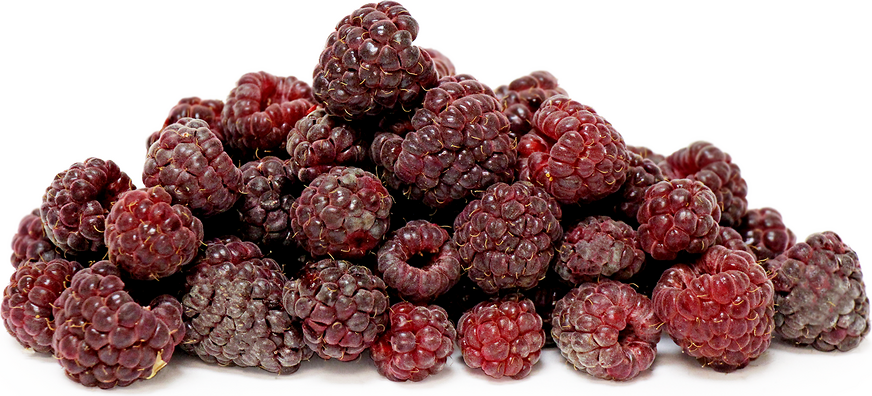


Purple Raspberries
Estimated Inventory, bskt : 0
Description/Taste
Purple raspberries are a larger berry than the more common red variety. Purple raspberries have a typical conical raspberry shape and a similar raspberry flavor, but they are sweeter than the red variety due to higher sugar content. Phytonutrient anthocyanins give Purple raspberries their intense plum color that can stain lips and mouths and doesn’t fade when cooked or processed.
Seasons/Availability
Purple raspberries are available in during the mid to late-summer.
Current Facts
Purple raspberries are hybrid berries developed from crosses between Red and Black raspberries, botanical names Rubus Idaeobatus and Rubus occidentalis, respectively. These amethyst-colored berries are a licensed variety from Cornell University. There are two predominant varieties of Purple raspberries: the Brandywine and its sister, Royalty. Purple raspberries ripen after the red variety and offer a color and flavor difference at the end of the berry season.
Applications
Purple raspberries make a colorful addition to fruit salads, tarts and cakes. The higher sugar content of the purple variety is perfect for jams and jellies and the berries retain their intense color through the preservation process. Make a puree to top cheesecake or adorn dessert plates, or use Purple raspberries to flavor ice cream or sorbet.
Geography/History
Purple raspberries were developed and released by the Geneva Experiment Station in Geneva, New York in 1982. The Royalty and Brandywine varieties are licensed by Cornell University. Purple raspberries out produce the red variety by almost 25%. Purple raspberries can be spotted at farmers markets around the United States, however, the fruit are often too soft for shipping.




